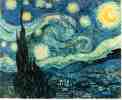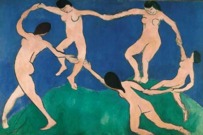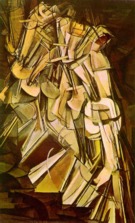

Movement in a second sense:
An art movement is an
artistic trend or tendency seen in the intentions or works of
a number of artists,
because there is a striking similarity among the techniques
or methods they have taken, or in the attitudes
which they espouse in a (more or less) organized effort.
Such art movements are listed in a
separate article.
Movement in the first sense can be seen in:
![]()
Adriaen de Vries (Dutch, c. 1545-1626),
Juggling Man, c. 1610 - 1615, bronze,
30 1/4 x 20 3/8 x 8 5/8 inches (77 x 51.8 x 21.9 cm), J. Paul
Getty Museum, Malibu, CA. See Mannerism
and kunststückemachen.

Francisco de Goya y Lucientes (Spanish, 1746-1828), The Forge, between c. 1815 and 1820,
oil on canvas,
71 1/2 x 49 1/4 inches (181.6 x 125.1 cm), Frick Collection,
NY. See Romanticism.

Eadweard Muybridge (American, born England,
1830-1904), Animal Locomotion: Leaping Man, c. 1887, Minneapolis
Institute of Arts, and Occident at a Gallop, 1878-1879,
Kingston Museum, UK, photographs
taken by a series of cameras.
Muybridge printed
these as sheets of sequenced
exposures, although they are displayed here as if projected like
a movie — a technological development Muybridge is considered to have pioneered. See Eadweard Muybridge photos reproduced at the "Masters
of Photography" site.

Eadweard Muybridge, Jumping a hurdle; saddle; bay horse Daisy
Plate 640 of Animal Locomotion, 1887, collotype,
Worcester Art Museum, MA. See animation,
cinema, equine
art, and time.
Winslow Homer (American, 1836-1910), Snap the Whip, 1872, oil on canvas, 12 x 20 inches, Metropolitan Museum of Art, NY. See realism.

Vincent van Gogh (Dutch, 1853-1890), The Starry Night, June 1889 (Saint-Rémy),
oil on canvas,
29 x 36 1/4 inches (72 x 92 cm), Museum of Modern Art, New York,
F 612. See Post-Impressionism.
Georges Seurat (French, 1859-1891), The Circus, 1891, oil on canvas, 73 x 59 1/8 inches, Musée d'Orsay, Paris.

Henri Matisse (French, 1869-1954), Dance (first version), 1909, oil
on canvas, 8 feet 6 1/2
inches x 12 feet 9 1/2 inches (259.7 x 390.1 cm), Museum of
 Modern
Art, NY. Matisse painted a second version of
Modern
Art, NY. Matisse painted a second version of Dance in 1910, oil
on canvas, 102 x 154 inches
(260 x 391 cm), Hermitage Museum, St. Petersburg, Russia. Dance,
together with Music, was commissioned by S.I.Shchukin
to decorate the staircase
in his Moscow mansion. Matisse took the motif
of the round dance, used as a symbol
back as far as French Renaissance,
to represent the rhythm
and expression of the
20th century. The spaciousness and expressive lines
emphasize the dynamics
of the figures.
Simplified and schematic
forms intensify the brightness and
resonance of the three
colors — red, blue and green. See music.
Dance, Matisse once said, meant "life and rhythm."
See dance, music,
and rhythm.

Henri Matisse, Music, 1910, oil
on canvas, 102 x 153 inches
(260 x 389 cm), Hermitage Museum, St. Petersburg, Russia. Created
as a pair to the Dance, again Matisse presented five figures
against a landscape
background of intense blue
and green. In contrast
to the movement in the Dance, here the figures' static
and isolated poses emphasize
the calm of their musical revery.

Umberto Boccioni (Italian, 1882-1916),
Unique Forms of Continuity in Space (Forme uniche
della continuità nello spazio), 1913, cast
1972, bronze, 117.5 x 87.6 x 36.8
cm, Tate Gallery, London. Also see Futurism.

Robert Minor (American, 1884-1952), Pittsburgh,
1916, lithographic
crayon and India
ink, published in The Masses, no. 8, August 1916.
Robert Minor produced this drawing
as an editorial cartoon,
commenting on a 1916 steel workers' strike. He was among the
first American editorial cartoonists to employ grease pencil
and ink brush, when most were using pen and ink. He emphasized the thrust of the soldier's bayonet by drawing its direction as the counterpoint to that of the worker's body. The grace of this juxtaposition results in our feeling all the more shock at the sight of the pointed blade. Minor drew inspiration for this approach from such European masters as Francisco Goya
and Honoré Daumier, coming to produce many such spare,
forceful drawings as this. See Realism, Romanticism, and social
realism.

Marcel Duchamp (American, born France, 1887-1968; in U.S.A. 1915-18, 1920-23, 1942-68), Nude Descending a Staircase, 1911-12, oil on canvas, 58 x 35 inches, Philadelphia Museum of Art, PA. Sometimes called Cubo-Futurists, so also see Cubism, as well as the Armory Show of 1913, in which this painting was highly controversial.
Charles Burchfield (American, 1893-1967), September Wind and Rain, 1949, watercolor, 22 x 48 inches, Butler Institute of American Art, Youngstown, OH.

John Steuart Curry (American, 1897-1946),
Fire Diver, 1934, watercolor on paper
mounted on board, 22 1/2
x 15 1/2 inches, Kemper Museum of Contemporary Art, Kansas City,
MO. See vertical.
Hal Riney & Partners, General Motors EV1 print ad, 1997.
 GifBuilder's author, Yves Piquet, of Lausanne,
Switzerland, includes a very helpful tutorial too.
GifBuilder's author, Yves Piquet, of Lausanne,
Switzerland, includes a very helpful tutorial too.
Also see animation, anime, automata, attitude, cinema, dance, direction, eurythmy, feng shui, flourish, four-dimensional, Futurism, gesture, kinesiologist, kinetic, measure, mobile, periodicity, rhythm, space-time, straight, time, tracking shot, video, Vorticism, zooming, and zoopraxiscope.

https://inform.quest/_art